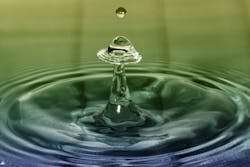Google to Replenish 20% More Water Than it Uses by 2030
Google aims to replenish 20% more water than its offices and data centers use by 2030, according to Google Chief Sustainability Officer Kate Brandt in a blog post.
The blog post cites concerns about the sustainability of its water practices in tech and highlights some of Google’s water initiatives.
According to the blog post, Google uses water to cool the data centers that make products like Gmail, YouTube, Google Maps and Search possible.
“We deployed technology that uses reclaimed wastewater to cool our data center in Douglas County, Georgia,” said Brandt in the blog post. “At our office campuses in the San Francisco Bay Area, we worked with ecologists and landscape architects to develop an ecological design strategy and habitat guidelines to improve the resiliency of landscapes and nearby watershed health. This included implementing drip irrigation, using watering systems that adjust to local weather conditions, and fostering diverse landscapes on our campuses that can withstand the stresses of climate change.”
Other actions to promote sustainability include:
- Assisting with finding solutions for local water and watershed challenges, which includes working with the Colorado River Indian Tribes project to reduce the amount of water that is withdrawn from Lake Mead reservoir on the Colorado River in Nevada and Arizona.
- In Dublin, Ireland, Google is installing rainwater harvesting systems to reduce storm water flows to improve water quality in the River Liffey and the Dublin Bay;
- And in Los Angeles, Google is investing in efforts to remove water-thirsty invasive species to help the nearby ecosystem in the San Gabriel mountains.
According to Brandt, another focal point of Google’s commitment to water conservation includes connecting with and providing tools for communities, policymakers and planners.
Water management efforts being implemented by Google include:
- Partnering with the United Nations Environment Programme and the European Commission’s Joint Research Centre (JRC) to create the Freshwater Ecosystems Explorer.
- Co-developing the web application OpenET with academic and government researchers to make satellite-based data that shows how and where water moves when it evaporates available to farmers, landowners and water managers;
- And providing Google.org funding for Global Water Watch and Windward Fund’s BlueConduit. Global Water Watch provides real-time indicators for current and future water management needs, and was built in partnership with Google.org, WRI, WWF and Deltares. BlueConduit quantifies and maps hazardous lead service lines, making it easier to replace water infrastructure in vulnerable communities.
“When it comes to protecting the future of our planet and the resources we rely on, there’s a lot to be done,” added Brandt in the blog post. “We’ll keep looking for ways we can use our products and expertise to be good water stewards and partner with others to address these critical and shared water challenges.”
